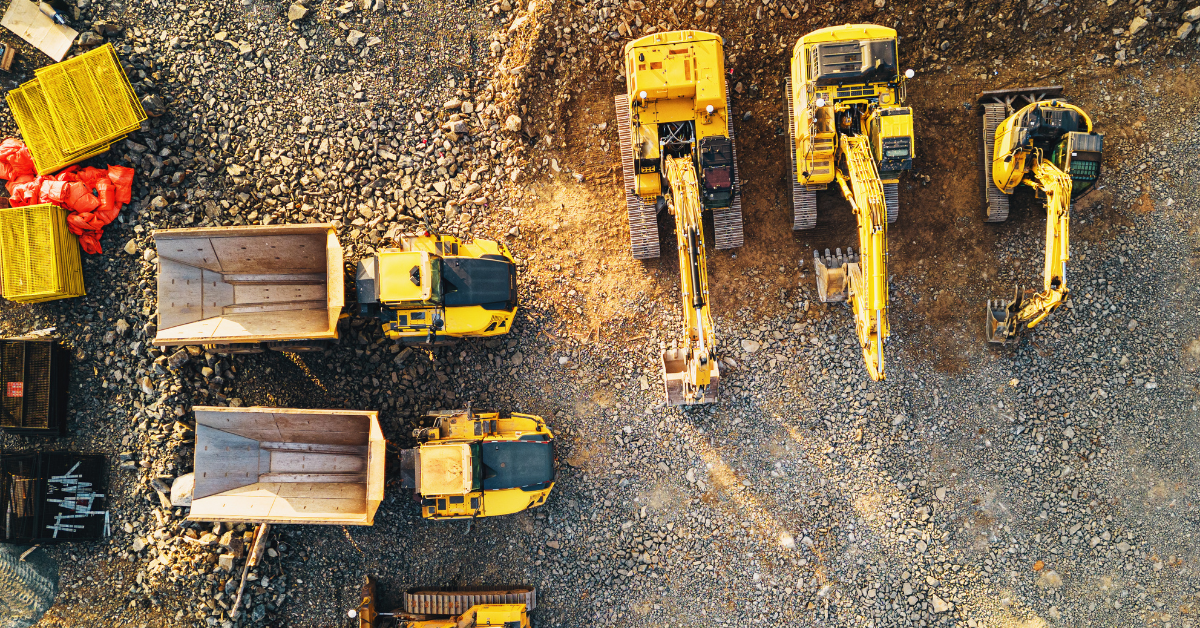

Contractors are no longer relying on whiteboards, spreadsheets, or phone calls to track machine movement and jobsite progress. With growing pressure to reduce idle time and increase efficiency, they’re integrating fleet monitoring directly into their workflows.
Modern fleet monitoring systems help teams locate assets, understand usage, manage service, and respond faster. These tools no longer sit outside the core of construction operations. They’re part of how high-performing contractors manage equipment, stay on schedule, and maintain visibility across multiple projects.
Platforms now support mixed fleets across OEMs and rental partners and the benefits scale with the business.
One of the biggest challenges on any jobsite is knowing where machines are and what they’re doing. Contractors can lose hours tracking down assets or confirming status by phone.
Fleet monitoring gives teams a live map view of every machine, with GPS data and usage activity visible at a glance. It’s easier to see which machines are idle or underused and shift resources accordingly.
‘Diagnostics and service alerts ensure machines are running when needed.’
This kind of insight simplifies reallocation and reduces delays. When equipment can be located, reassigned, and verified without phone calls or physical checks, project coordination improves.
Routine service often follows a calendar, not actual usage. That leads to unnecessary maintenance on some machines and missed service on others.
Fleet monitoring systems replace guesswork with real-time data. They log engine hours, operating conditions, and fault codes, so service is triggered by real usage patterns. Technicians arrive better prepared, with the right parts for the job. This shortens repair times and helps avoid multiple visits. It also increases first-time fix rates.
‘Today’s platforms are flexible, brand-agnostic, and built to work across mixed fleets.’
When service reflects what the machine has actually experienced, teams avoid over-servicing and keep jobsites running with less interruption.
Unexpected breakdowns disrupt schedules and increase costs. Many of these failures are predictable, if the data is available.
With diagnostic alerts and machine health tracking, fleet monitoring systems catch early warning signs before something breaks. Teams can schedule service, coordinate around repairs, and avoid onsite surprises. This approach can reduce downtime by up to 50%. Projects move more predictably, and equipment lasts longer.
Fleet monitoring also highlights idle time. Reducing unnecessary engine hours improves fuel efficiency and cuts wear on machines, which contributes to both performance and sustainability.
Fleet monitoring systems also improve operator safety. By linking access control to machine data, contractors can ensure that only trained personnel operate specific equipment. Credentials can be assigned based on job roles or certifications and updated remotely.

This reduces accidents and helps protect teams on site. It also reduces misuse and theft, since access is verified and logged automatically. Contractors using digital access as part of fleet monitoring have a clearer picture of who is on each machine, how long it was used, and whether safety procedures were followed.
Contractors often over-rent or underuse equipment because there’s no clear record of actual utilization.
Fleet monitoring systems collect real-time and historical usage data that shows how each machine performs across projects. These insights help identify overworked or underused assets, guide rental decisions, and support smarter bids.
‘Fleet monitoring turns complexity into clarity—helping teams work faster, safer, and more efficiently.’
It also informs fleet sizing and long-term asset planning. Teams gain a more balanced view of where they can scale up, or streamline, based on actual usage, not assumptions.
Perhaps the most valuable feature of modern fleet monitoring is how it connects multiple systems into one interface.
Instead of logging into separate tools for service, location, access, and reporting, contractors can view everything in one platform. This improves collaboration between field teams, project managers, and the back office.

Smart fleet monitoring can unite diagnostics, usage data, service history, and access control. The result is faster coordination and less time lost chasing updates across systems.
Fleet monitoring becomes a control panel for the entire operation, not just a tracking tool.
The shift toward smart fleet monitoring is no longer about innovation. It’s about necessity.
Contractors who adopt fleet monitoring systems are improving uptime, reducing waste, and delivering stronger project outcomes. With real-time visibility and data-backed decisions, teams can manage jobsites with greater confidence.
Smart fleet monitoring brings structure to complex operations. It helps every team member — from operator to executive — make faster, better-informed choices. Choices that can be the ultimate difference maker.
Discover how smart fleet monitoring helps your team work faster, safer, and with greater control. Explore Trackunit Manager.
Foundations is our new series focusing on the nitty gritty of construction technology and showing how to make it work for your business day-to-day. Want to find out more? Visit Trackunit today and make sure you’re fully connected.